North East India Tour Itinerary-Travel, Learning, Exposure, Fun
North East Tour Itinerary 7 Days
Being a travel enthusiasts one must have heard of Sikkim and googled through North East Itinerary in hopes to visit and write it off of their bucket list.
Why Sikkim a small state as of late has been adored by people and has been added as one of their must stop destinations during their North East India tour? One can argue it’s because of the beautiful nature or its food or its locality but Sikkim North East India is a combination of a mixture of all the things that gives rise to this beautiful state that is so much more than its mere size and whatever meets the eye. The feel good factor is surreal and can only be expressed through actions and emotions and not by simple words.
Hence, with Edvacations you can add value to your tour with our 7 Days North East India tour itinerary where you can have a comprehensive experience of Travel, Learning, Exposure & Fun.
Everyone loves travelling and the means of transportation has become easy and convenient more than ever in the 21st century. So all the travel enthusiasts should have heard of Sikkim at some point or must be one of the places they hope to visit and write it off of their bucket list at some point.
Why Sikkim a small state from the North East India as of late has been adored and slowly become a dream destination? One can argue it’s because of the beautiful nature or its food or its locality but Sikkim is a combination of a mixture of all the things that gives rise to this beautiful state that is so much more than its mere size and whatever meets the eye. The feel good factor is surreal and can only be expressed through actions and emotions and not by simple words.

Sikkim is almost surrounded only by hills and with 28 mountain peaks, more than 80 glaciers, 227 high altitude lakes, five major hot springs and more than 100 rivers and streams it just furthers the diversity of terrains and cultures found in India. Sikkim’s origin might be traced and attached to Buddhism but nevertheless the state celebrates all major festive from Diwali, to Dashera to Holy to Christmas. You can hardly feel out of place with the diversity of ethnic values you might come across Sikkim.
Even though Sikkim is one of the least populated states of the country you can find people who are full of life and so heartwarming in all parts of the state. The locals are very keen on knowing and helping outsiders and the state being clean and full of greenery makes the city people’s dream of experiencing the suburban lifestyle come into reality. So Sikkim should definitely be on your map the next time you plan your trip to somewhere, be it the weather, food, landscapes, people or just an escape from your day to day busy city life.
Table of Content
i. About the tour
ii. How to reach Sikkim
iii. Where to stay
iv. Best places to visit in Sikkim
v. Local sightseeing of Sikkim
vi. Things to do at Sikkim
vii. Location and border shares
viii. Local foods of Sikkim
ix. Weather conditions and best time to visit Sikkim
x. Local foods of Sikkim
xii. North East Tour Itinerary for 7 days
About the tour
Sikkim is a state with lots of ethnic groups leading to many traditions and practices, where the official language of the state is Nepali, Sikkimese and Lepcha. Whereas the most followed religion practices lie in the Buddhism and Hinduism side.
How to reach SikkimAir Sikkim has one airport located at Pakyong which is 31km away from the state’s capital. The airport is a Greenfield airport constructed on a 200 acre land at an altitude of 4,700 feet above sea level making it one of the five highest airports in India.
Railway The railway station which was going to connect Rangpo and Sevoke is still at halt however if you are opting to travel to Sikkim through railways the closest station is located at Siliguri and New Jalpaiguri.
On road travel
Bus – There are a lot of buses available in Siliguri to reach Gangtok, the Sikkim government has fixed-rate buses.
Sikkim National Transport (SNT) is the terminal where you can find the bus to Gangtok.
Taxi – Private taxis are available easily at Bagdogra and NJP railway station.
Shared Jeeps – A cheaper option but with a little less comfort as there are 10 people with you on the ride and
most of your luggage will be kept at roof. But you can reserve extra seats if you want a comfortable journey to
your desired destination.
Hotels You might not find fancy five star hotels in Sikkim if you are coming from metro cities but you can definitely find an adequate level of hotels for your stay.
Best places to visit in Sikkim
Gangtok – One of the most famous towns of North East India and the main area for tourism in Sikkim where all the travelers gather around in this small town and start their journey from Gangtok to other parts of the state. 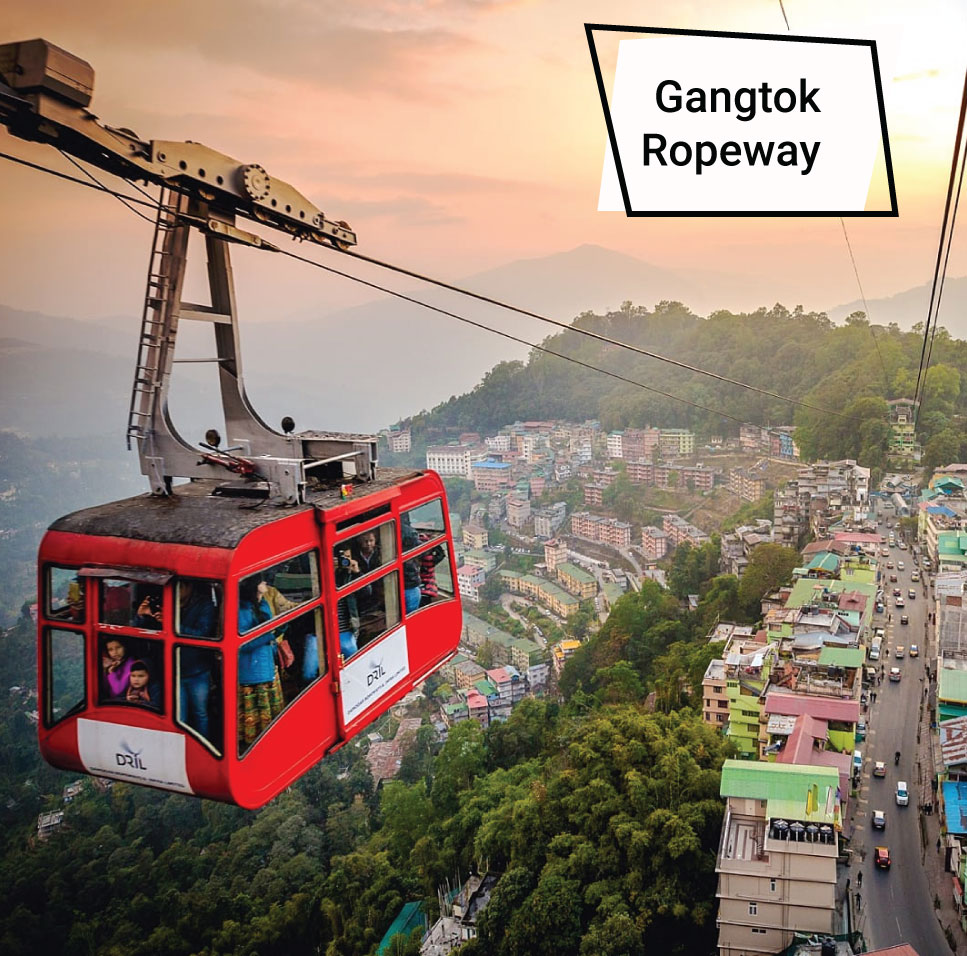
Namchi – 78 kilometers from Gangtok and 100 kilometers from Siliguri a place called Namchi resides, where travelers and pilgrims arrive at Namchi to worship and sightsee the monasteries and statues of Buddha and Hindu Gods. On their travels to Namchi one can see the famous Temi Tea garden among other things.

Geyzing –Geyzing is a popular destination for people who come to Sikkim and want to go for trekking in the wilderness or go for expeditions to Kanchenjunga or travelers can go to nearby places like Pelling, Yuksom and so on.
Lachung – Described as the ‘most picturesque village of Sikkim’ by British explorer Joseph Dalton Hooker in his book “The Himalayan Journal’ the place definitely lives up to this sentence and for travelers it is a must visit place because as it is a crucial stop on their travels to Yumthang Valley. This quaint place will definitely give you some amazing photos for your memories with its serene views and old structured Buddhist infrastructures.
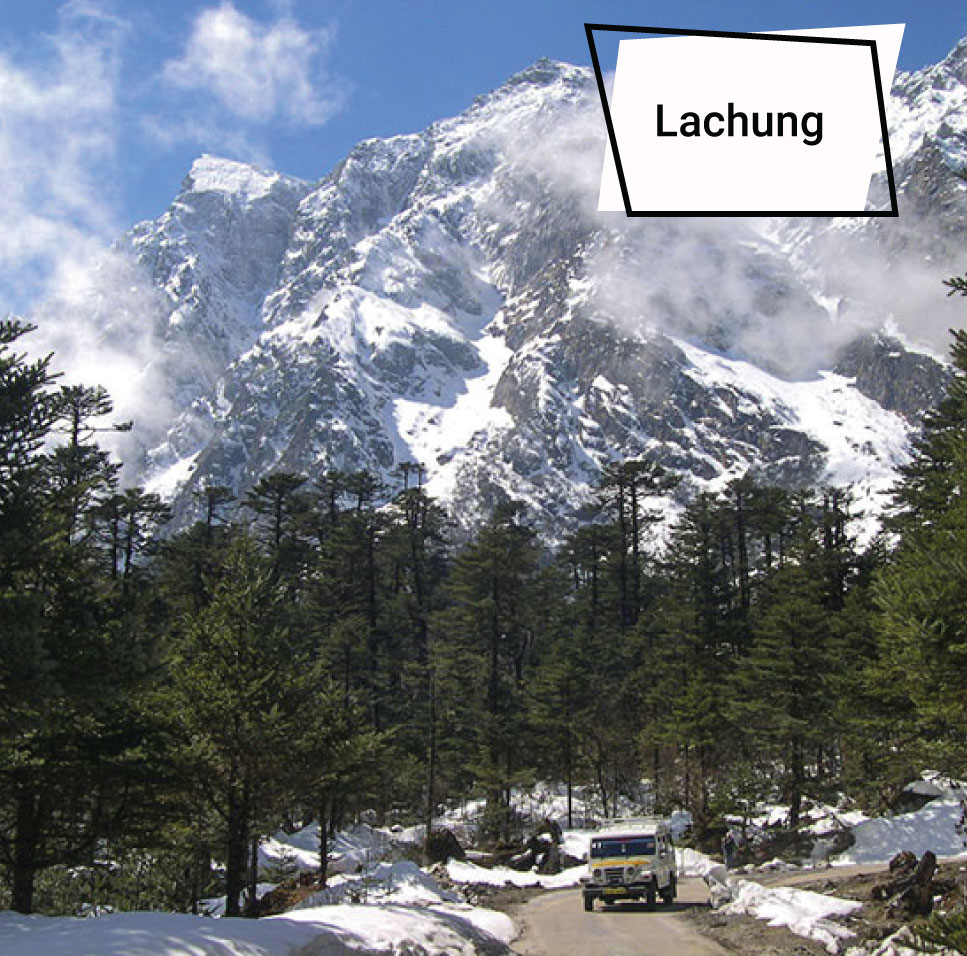
Mangan – A crucial town for the North District of Sikkim for its facilities and accommodations it is regarded to be the largest district of Sikkim area wise. It acts as the intermediate for travelers while touring the North parts of Sikkim from the East.
Lachen – Famous for being the base for Chopta Valley and Gurudongmar Lake, or its annual yak race Lachen is worth your time for reasons like its old following of Buddhist traditions, monasteries anmd natural landscapes. Lachen is about 129km from Gangtok.
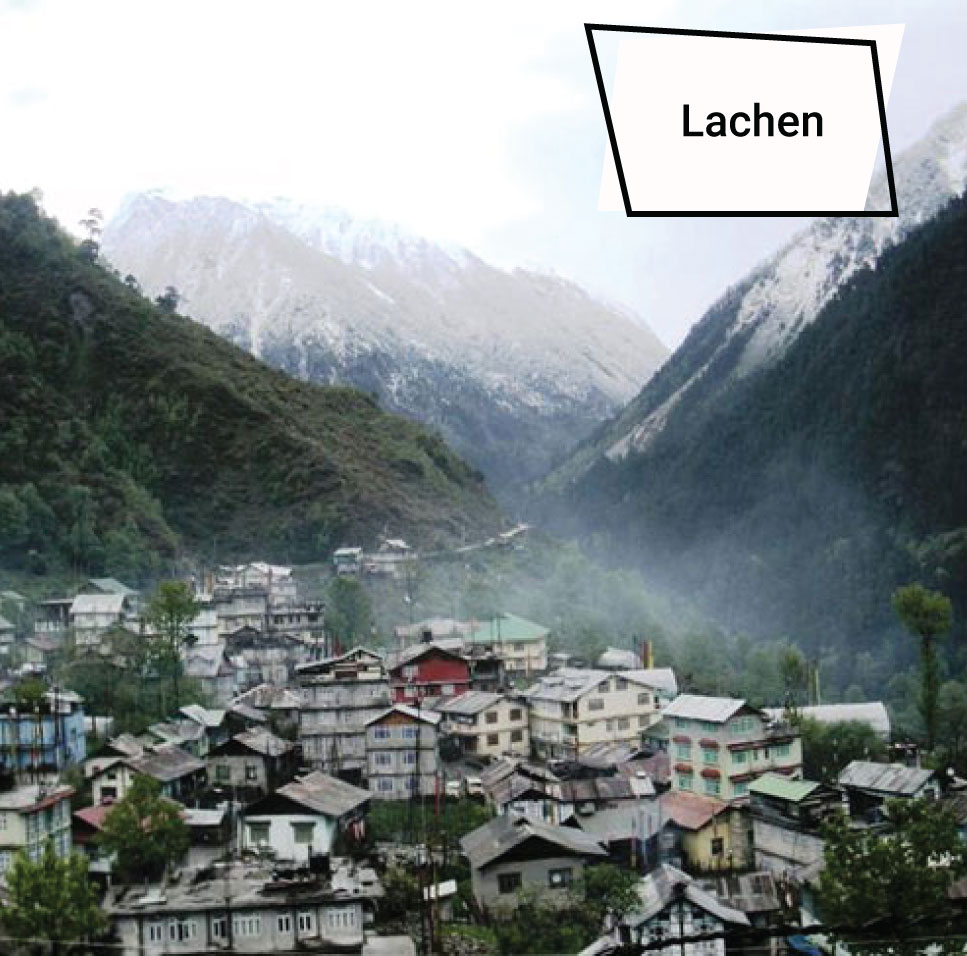
Yumthang – The Yumthang Valley is a nature sanctuary famous for its rivers, hot springs, yaks and grassland. The place is at its peak during the month of February and June where 250 species of flowers bloom. It is about 150 kilometers from Gangtok.
Ravangla – This small town on the outskirts of the main town area of Sikkim on its south side is famous for Buddha Park and acts as the starting point for the trek to Maenam Wildlife Sanctuary. It is located 65 km from the state capital.
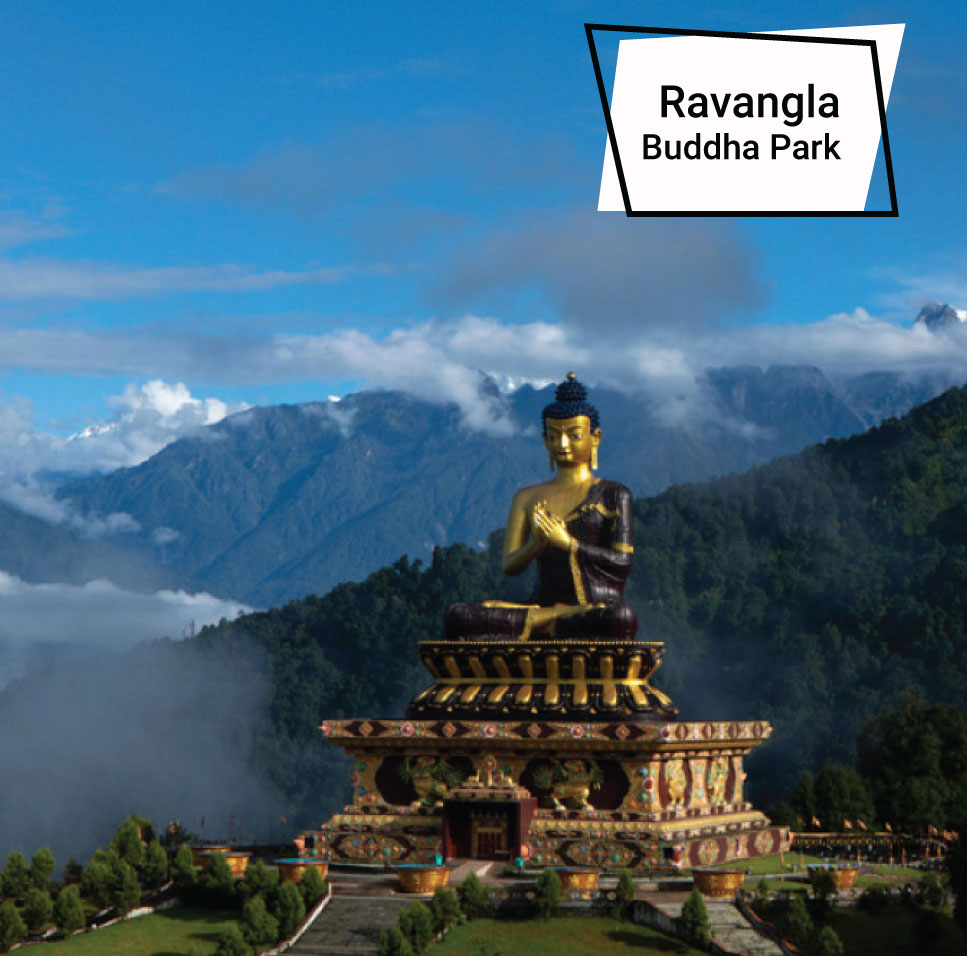
Pelling – A small hill town in the West District of Sikkim which is 10km from Geyzing and 131km from Gangtok, it is famous for its waterfalls, rock gardens, monasteries and its sky walk. It is the base for trekkers who undertake treks in the West Sikkim. Kanchenjunga can be seen closely from Pelling.
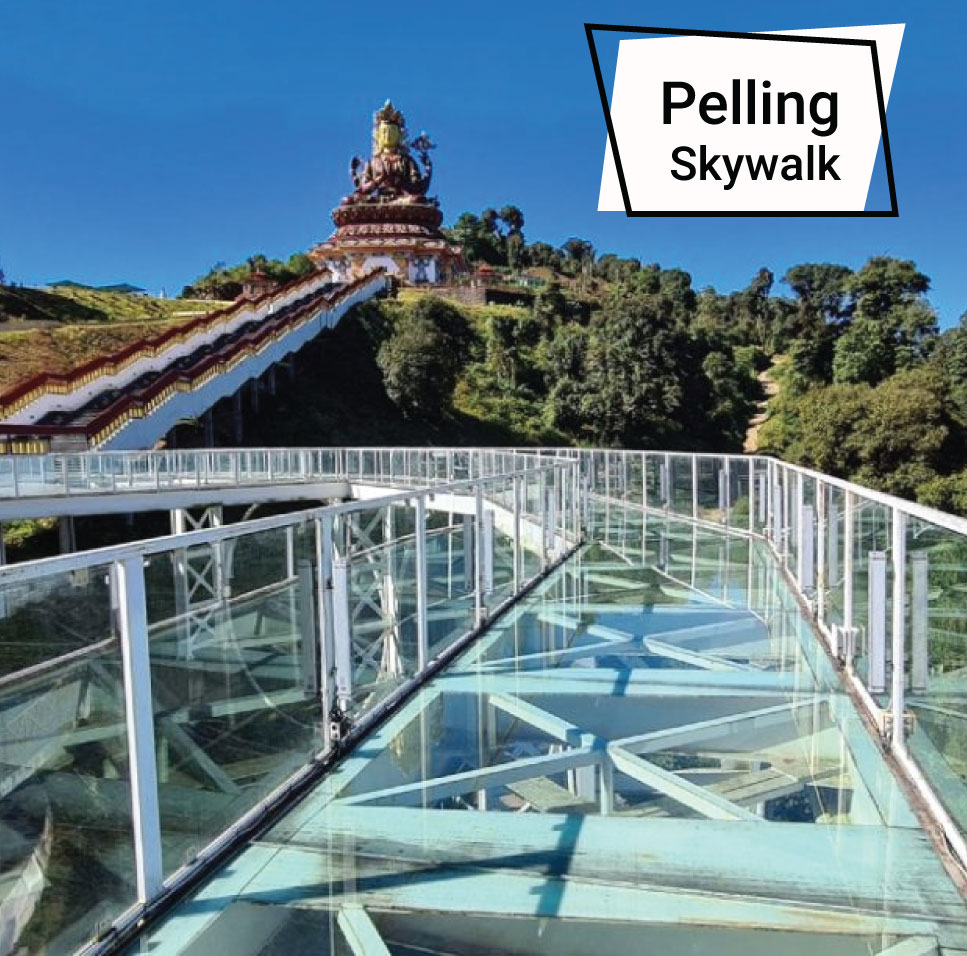
Yuksom – The first capital of Sikkim Yuksom is a special place for the Buddhist communities as it has many historic infrastructures and monasteries and is a culture defining place for them. It is the base camp for mountaineers who are headed towards Mt. Kanchenjunga. Yuksom gives an insight to the by gone days of Sikkim through its historic infrastructures.
Gurudongmar Lake – One of the highest lakes in the world and in India at an elevation of 17,800 ft Gurudongmar Lake considered a sacred place by Buddhist, Hindus and Sikhs the lake is named after Guru Padmasambava founder of Tibetan Buddhism is one of the most famous and must visit places of Sikkim where you can come across breathtaking views of mountains and see the place covered in snow and see the clear blue lake located there.
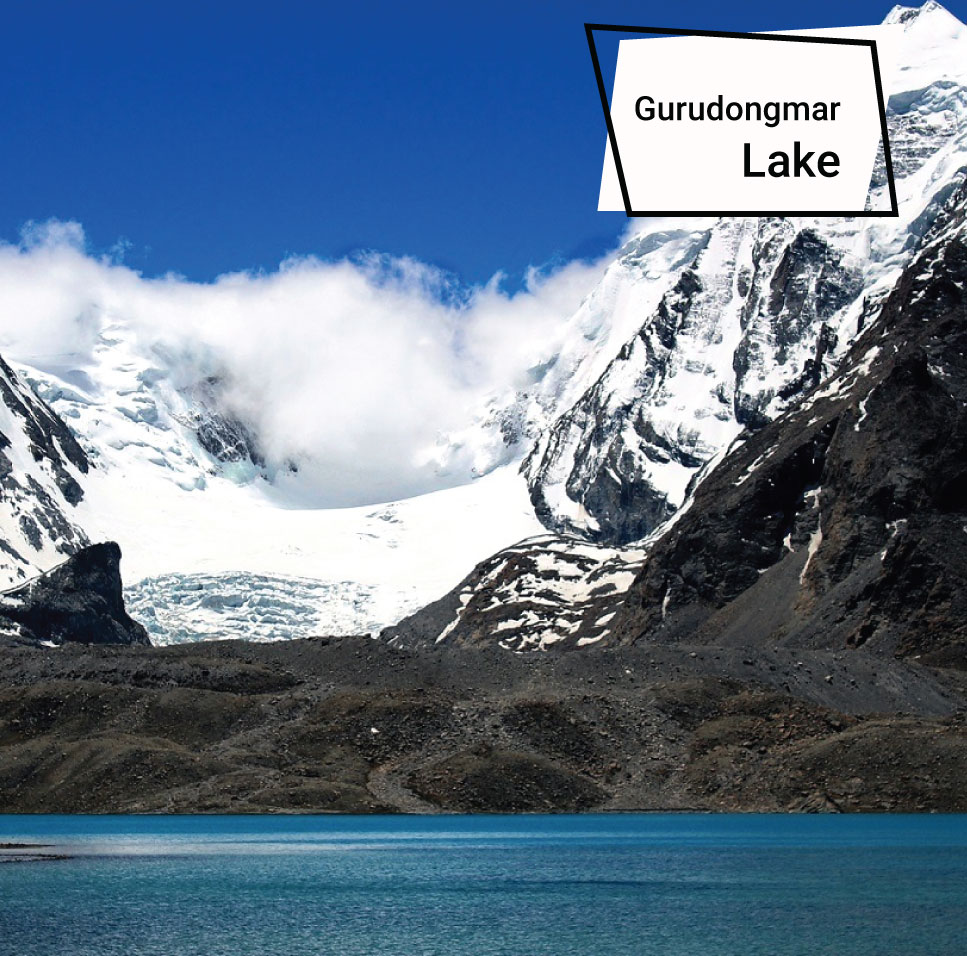
Rumtek Monastery | Tashi View Point | Pelling Sky Walk | Bhan Jhakri Falls | Water Garden | Hanuman Tok | Ganesh Tok | Khangchendzonga National Park | Tsomgo Chho | Khecheopari Lake | Pemayangtse Monastery | Enchey Monastery | Palace Gumpa | Baba Harbhajan Singh Temple | M.G Marg | Deorali | Lingdum Monastery | Zero point | Bakthang Falls | Kanchenjunga Falls | Shingba Rhoddodendron Sanctuary | Dubdi Monastery | Samdruptse | Singshore bridge | Rabdentse Ruins | Kyongnosla Alpine Sanctuary | Mount Katao | Sarmsa Garden | Sikkim Silk Route | Char Dham Temple | Temi Tea Gardens | Singalia Pass | Sikkim Himalayan Zoological Park | Talung
Things to do at SikkimParagliding –If you like adrenaline rush and breathtaking views than paragliding is the ideal activity for you. Paragliding is available in Sikkim at Ranka.
Trekking – If you like pushing yourself and want to test your limits than challenging yourself on treks will be perfect fit for you and for that Sikkim gives a perfect opportunity with its wide range of trekking spots.
River Rafting – Teesta and Rangeet rivers in Sikkim give opportunity for this exciting adventure sport in Sikkim.
Ropeway – If you like height and want photos from an alleviated spot than Gangtok’s ropeway will give you a perfect view of the town and its busy crowd.
Bike Rides – Bike enthusiasts are always up for long expeditions and Sikkim is amazing for such expeditions with your friends where you’ll come across tough but rewarding experiences.
Bird watching – If birds fascinate you and you just want to find yourself in the middle of mountains at peace than you can visit Yuksom, Zuluk or Okhrey.
Rock Climbing – A dangerous sport for which you’ll need prior experience and permits but if you are familiar in this field than Sikkim has many options to climb many peaks.
Cycling – Cycling is one of the many activities done regularly in Sikkim and for right reasons, uphill challenges and serene views are perfect for cycle enthusiasts.
Bungee Jumping – Singshore bridge at Sikkim gives you the opportunity to experience the thrill of Bungee jumping. Professionals are there to help you through this experience.
Monasteries – A delight for pilgrims and a new outlook on life for travelers you can find so many monasteries in Sikkim in all parts of the state from small, big, oldest, historic you can get emerged on your travels.
National parks – Sikkim has 9 protected areas which comprises of 1 National Park, 7 Wildlife Sanctuaries and 1 conservation reserve so you put it on your to do list if you are running out of ideas for your trip.
Yak riding – So many people don’t come across yaks from where they come from but Tsomgo gives you the opportunity to ride this ferocious looking but delicate animals.
Shopping – Souvenirs are like medals for one’s journey or a timeframe for a once in a lifetime experience and picking out souvenirs might get tricky cause of its wide range of traditional items.
Local cuisine –Every part of the world has flavor unique to it and same goes for Sikkim’s local foods which are as good as it can get from fast foods to big restaurants you will have a hard time choosing.
Road trips – Of course everyone loves road trips especially if the place is new to them and exploring and taking pictures while on road in Sikkim will be never dull as every turn you can come across mind blowing views.
Lakes –With 227 lakes you will be having a hard time choosing which lake you should be visiting while on your trip.
Hot springs – Who wouldn’t love a deep in a hot spring while they are well above sea level and tackling high altitudes and cold weather.
Local foods of SikkimSikkim the brother of North East States of India is a small state located in the Eastern Himalayan regions of India where most of the inhabitants are Buddhist and Nepalis. Hence, their food are mostly effected by Tibetan culture and Nepali culture and although there are many different types of foods of specific tribes but is not sold widely or not at all in restaurants and fast foods. But let’s look at what we can get while we visit Sikkim.
Momos – Chinese dumplings but widely known as momos are a specialty of the Sikkimese people and you can hardly go wrong with momos over there as even the smallest fast food vendors sell one of the best momos you can taste in the world. From wide range of choices for the ingredients you can opt for veg moms, chicken moms, pork moms to beef momos. Best places to get momos – Taste of Tibet, Shuffle momos, Roll House
Thukpa – As Sikkim gets cold most part of the year around Thukpa is the perfect go to meal for a cold day as it is a bowl of hot soup with noodles and lots of veggies and meat if you are a non veg person. The bowl is one of the go to dishes if you want to try some good local food. Best places to get Thukpa – Taste of Tibet, House of Bamboos
Sha Phaley – A stuffed pastry like dish with insides filled with meat is one of the most sought out food for locals so as a traveler you should definitely try it out. The best Sha Phaleys are found in unknown food stalls which make your culinary journey more interesting and fun. Best places to get Sha Phaley – Taste of Tibet, Square
Sael Roti – Round shaped bread made from rice is one of the absolute favorite side dishes of the local people where they eat it as breakfast or use it for dishes served on festive occasions. It is usually eaten with potato curry or tea. However the best Sael Rotis are not sold in market but made at home by the locals sadly but you can still get it easily at the town area. Best places to get Sael Roti – Roll house, Parivar restaurant
Chang – Chang is a fermented alcoholic beverage and widely known as Thomba and is a traditional drink for the Sikkimesse people. It is served in a wooden mug with bamboo straws. Best places to get Chang – Absolute Demazong
Thenthuk – Another special type of noodles found in Sikkim. Thenthuk is a similar type of dish to Thukpa but has its own unique twist to it which makes such similar dishes so different from each other. Best places to get Thenthuk – Taste of Tibet, Square
Kinema curry – Kinema is a side dish which is eaten with rice, this one of a kind dish is made by fermented soy beans and has spices in it.
Gundrukh – Gundrukh is a type of fermented leaf which is served as a soup with vegetables or just Gundrukh in it and is major side dish of the Sikkimese people. Best places to get Gundrukh – Bhansa Ghar, Parivar restaurant
Nepali Thalis – Best way to get the gist of flavors in one plating would be to try Nepali Thalis either veg or non-veg. It has a variety of side dishes with rice and is served in their local plating and has various local ingredients. Best places to get Nepali Thalis – Bhansa Ghar, Parivar restaurant
Jaanr – A traditional drink of the locals is Jaanr, the different types of Jaanr found are Makai ko Jaanr, Bhaate Jaanr, Simal tarul ko Jaanr, Gahun ko Jaanr, Jahun ko Jaanr, Khodo ko Jaanr and so on. Best place to get Jaanr – Local stalls
Weather conditions and best time to visit SikkimSo you guys might be planning to visit Sikkim in the near future or as soon as possible but find yourself wondering what season and time is the best to visit Sikkim. Even though the state of Sikkim is fun all year round, with the locals to accompany and welcome you on every step of your journey and the five seasons to give you a different view of the state’s mountains, rivers, valleys, places or just the simple day to day life of the locals in their villages and towns, you can get lost and find yourself at tranquility at any given time. But to be precise and to give an optimal answer to your question, the best time to visit this small corner of the world in the North East India is from March to May for its pleasant climate which eases your expeditions, whether it might be traveling, trekking, bike rides, rafting and so on.
The other season you can plan your visit is the time when the cold weather kicks in from October to December. Around this time of the year you can experience the festive such as Maniram Bhanjyang Tourism Festival, Cherry Tea Festival or the Red Panda Winter Festival or go see the snowy mountains and experience camp fires in the high altitudes with a hot beverage. The summer around the state has a minimum temperature of 24⁰c to a maximum of 45⁰c and the winter can range from 10⁰c to 27⁰c. The only time you can avoid or cancel your visit to Sikkim is from July to September as it rains quite a lot around this time and might cause hindrance on your journey but if somehow you do find yourself at Sikkim around this time of the year make sure to buy yourself a raincoat to tackle the unexpected rain and get wet.
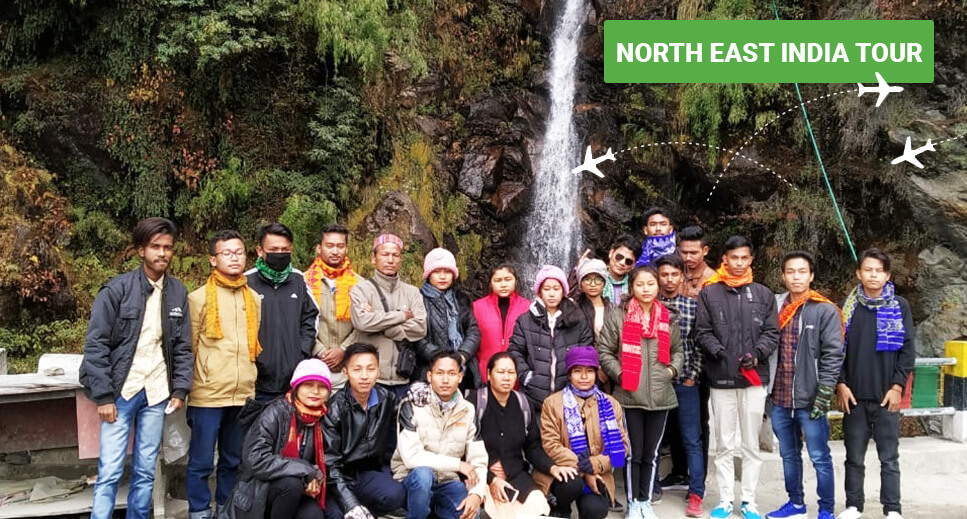
North East India Tour Itinerary 7 Days
A North East India tour itinerary is something which educational institutions should build in their curriculum not only for the pleasure of traveling to the North East of India but also for the learning, exposure & fun that the North East of India could offer for life for the student.
Students and institutions will value add with the North East itinerary packages offered for Sikkim and the North East of India with effective cost managed well understanding the requirements of educational institutions.
We are committed to enriching students though educational travel to the North East of India. Travel helps to develop confidence, time management, social skills, team building, stimulates personal growth, adaptation and observation skills and gives the young minds an opportunity to learn about other cultures and customs. We also ensure to pay minute attention to the safety and security of our student groups.
North East India Tour Itinerary Details:-
Day 0 - Bagdogra Airport
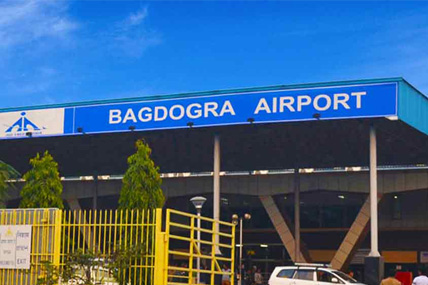 The 4-5 hours journey from the Bagdogra Airport to Pakyong, is likely to be a treat. With the first view of the mountains,
Teesta River and small towns on the way. Arrive at Pakyong and check-in to your hotel. The remainder of the day is free to explore this
beautiful city.
The 4-5 hours journey from the Bagdogra Airport to Pakyong, is likely to be a treat. With the first view of the mountains,
Teesta River and small towns on the way. Arrive at Pakyong and check-in to your hotel. The remainder of the day is free to explore this
beautiful city.
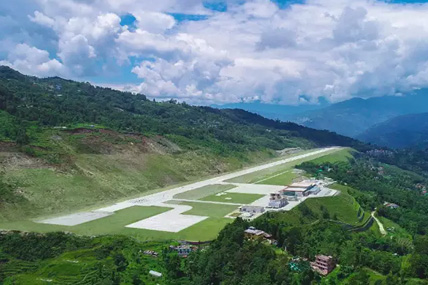 Pakyong will act as your starting base station and there’ll be a pre-tour group meeting. Visit the Shivalaya temple, Pacheykhani cave, Changey monastery, Devi Mandir, Karthok monastery and Monks’ Retreat Centre. Trek to jhandi dhara.We’ll visit a missionary school called St.Xavier’s which ranked as one of the top schools in Sikkim during 90s. Visit the “National Research Centre for Orchids”,ICAR Institute and get prepared to visit for Gangtok.
Pakyong will act as your starting base station and there’ll be a pre-tour group meeting. Visit the Shivalaya temple, Pacheykhani cave, Changey monastery, Devi Mandir, Karthok monastery and Monks’ Retreat Centre. Trek to jhandi dhara.We’ll visit a missionary school called St.Xavier’s which ranked as one of the top schools in Sikkim during 90s. Visit the “National Research Centre for Orchids”,ICAR Institute and get prepared to visit for Gangtok.
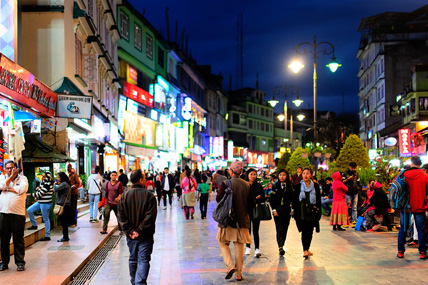 Arrive at Gangtok in the afternoon and check-in to your hotel.You may consider spending time at MG Marg and Lal Bazaar.Then go for a local sight-seeing in Gangtok which includes Rumtek or Ranka,Ban Jhagri Falla,The Flower Exhibition centre, Himalayan Zoological Park, Tashi Viewpoint, Enchey monastery, Hanuman Tok and Ganesh Tok.
Arrive at Gangtok in the afternoon and check-in to your hotel.You may consider spending time at MG Marg and Lal Bazaar.Then go for a local sight-seeing in Gangtok which includes Rumtek or Ranka,Ban Jhagri Falla,The Flower Exhibition centre, Himalayan Zoological Park, Tashi Viewpoint, Enchey monastery, Hanuman Tok and Ganesh Tok.
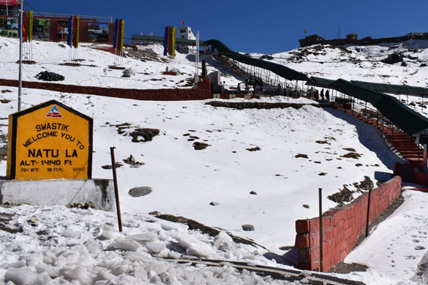 Early morning breakfast. Embark jeep to reach Changu Lake (12,400 ft), a high altitude sacred lake. Permits are made one day prior to visit. This is nearly 48kilometers drive and takes nearly 2hours.
Early morning breakfast. Embark jeep to reach Changu Lake (12,400 ft), a high altitude sacred lake. Permits are made one day prior to visit. This is nearly 48kilometers drive and takes nearly 2hours.
Changu Lake is one of the holy lakes of the region- A temple of Lord Shiva is built on the lakeside. Primula flowers and other alpine plantation provide an immaculate beauty to this place. An ancient branch of the Silk Road, Nathula Pass is located at 4,309m (14,140ft) above sea level.
The pass links India and China by one of the world’s most scenic mountain roads, which winds its way across the rugged landscape and crosses a glacial lake.
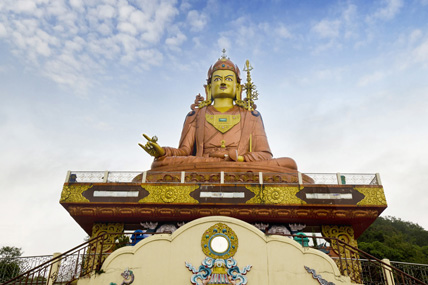 After an early breakfast,proceed towards Namchi. You will cross Temi Tea Garden, which is Sikkim’s sole Tea estate. You may stop at one of the restaurants on the way, buy tea varieties, take a walk in the tea estate, as well as get photos clicked in local attire. Next, we head towards Char Dham in Namchi, which is a tourist destination having scaled replicas of the four most revered Dhams of the Hindus. The 108 feet Statue of the Lord Shiva enclosed by the twelve ‘Lingas’, a temple of Shirdhi Sai Baba and an effigy of Lord Kirateshwara. You may stop to see the colossal statue of Guru Rinpoche at Samdruptse. Then Visit the JNMIH Blind School, a primary only school located in Boomtar, Namchi. Later, check-in to your hotel.
After an early breakfast,proceed towards Namchi. You will cross Temi Tea Garden, which is Sikkim’s sole Tea estate. You may stop at one of the restaurants on the way, buy tea varieties, take a walk in the tea estate, as well as get photos clicked in local attire. Next, we head towards Char Dham in Namchi, which is a tourist destination having scaled replicas of the four most revered Dhams of the Hindus. The 108 feet Statue of the Lord Shiva enclosed by the twelve ‘Lingas’, a temple of Shirdhi Sai Baba and an effigy of Lord Kirateshwara. You may stop to see the colossal statue of Guru Rinpoche at Samdruptse. Then Visit the JNMIH Blind School, a primary only school located in Boomtar, Namchi. Later, check-in to your hotel.
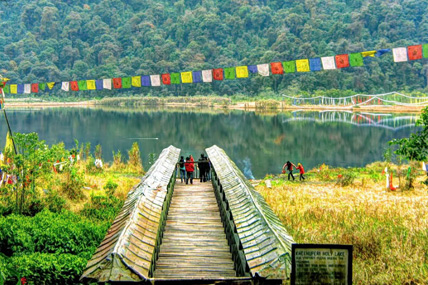 After an early breakfast,proceed towards Namchi. You will cross Temi Tea Garden, which is Sikkim’s sole Tea estate. You may stop at one of the restaurants on the way, buy tea varieties, take a walk in the tea estate, as well as get photos clicked in local attire. Next, we head towards Char Dham in Namchi, which is a tourist destination having scaled replicas of the four most revered Dhams of the Hindus. The 108 feet Statue of the Lord Shiva enclosed by the twelve ‘Lingas’, a temple of Shirdhi Sai Baba and an effigy of Lord Kirateshwara. You may stop to see the colossal statue of Guru Rinpoche at Samdruptse. Then Visit the JNMIH Blind School, a primary only school located in Boomtar, Namchi. Later, check-in to your hotel.
After an early breakfast,proceed towards Namchi. You will cross Temi Tea Garden, which is Sikkim’s sole Tea estate. You may stop at one of the restaurants on the way, buy tea varieties, take a walk in the tea estate, as well as get photos clicked in local attire. Next, we head towards Char Dham in Namchi, which is a tourist destination having scaled replicas of the four most revered Dhams of the Hindus. The 108 feet Statue of the Lord Shiva enclosed by the twelve ‘Lingas’, a temple of Shirdhi Sai Baba and an effigy of Lord Kirateshwara. You may stop to see the colossal statue of Guru Rinpoche at Samdruptse. Then Visit the JNMIH Blind School, a primary only school located in Boomtar, Namchi. Later, check-in to your hotel.
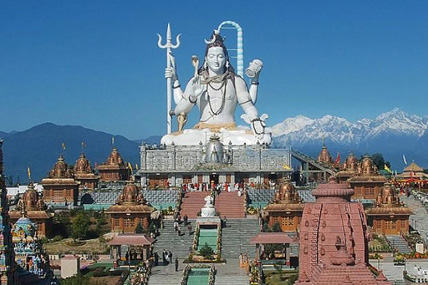 After breakfast, you will hop in the four wheeler, which will take you to Pelling. From Namchi it is nearly 74 kilometers drive and takes nearly 3 hours to reach Pelling. The snow-capped Kanchenjunga Mountains form a dramatic backdrop for holidays in Pelling. You will visit Darap village, Rimbi Falls, Khangchendzonga waterfalls and Khecheopalri Lake.
After breakfast, you will hop in the four wheeler, which will take you to Pelling. From Namchi it is nearly 74 kilometers drive and takes nearly 3 hours to reach Pelling. The snow-capped Kanchenjunga Mountains form a dramatic backdrop for holidays in Pelling. You will visit Darap village, Rimbi Falls, Khangchendzonga waterfalls and Khecheopalri Lake.
This Lake is one of the sacred Buddhist Lakes, lies at the centre of many folk legends and is believed that whatever is wished in front of the lake comes true. In the second half of the day, you will be visiting Pemayangtse Monastery, Rabdentse Ruins-the ancient capital of Sikkim. The palace ruins also give an amazing view of the valley and New Helipad Ground. The New Helipad offers a great view of the Kanchenjunga at sunrise. After the tour, head back to hotel for dinner.
 After an early breakfast, get ready for an experience of a lifetime. Arrive at Bhageykhola in Sikkim, wear your helmet, a life jacket, hold your pair of oars and settle in your raft and hit on the challenging water of the turbulent Teesta and Rangit. One of the best adventure activities in Sikkim, white water rafting gives you an adrenaline high. The icy cold River Teesta is labeled 4 on the International scale. It has a number of rapids with changing intensity and character. The rapids in Sikkim are classified from 2 to 4. After you are rafting, change your dress and be ready to proceed towards Bagdogra Airport for reaching your onward destination.
After an early breakfast, get ready for an experience of a lifetime. Arrive at Bhageykhola in Sikkim, wear your helmet, a life jacket, hold your pair of oars and settle in your raft and hit on the challenging water of the turbulent Teesta and Rangit. One of the best adventure activities in Sikkim, white water rafting gives you an adrenaline high. The icy cold River Teesta is labeled 4 on the International scale. It has a number of rapids with changing intensity and character. The rapids in Sikkim are classified from 2 to 4. After you are rafting, change your dress and be ready to proceed towards Bagdogra Airport for reaching your onward destination.
Download North East Tour Itinerary Packages for 7 days
First step - Book your Flight to Pakyong airport or arrive at Bagdogra via flight or train.
Second step – Arrive at Gangtok and find a good place to stay or arrive at your pre booked hotel.
Third step – Visit your preferred destination in North, East, South or West district of Sikkim which shall take about two to three days.
Fourth Step – Explore the town areas of Gangtok or nearby destinations.
Fifth Step – Return to Bagdogra.
From March to May or October to December
c) Is it safe to visit North East during Coronavirus?Yes as most citizens are fully vaccinated and there are proper measures being taken to ensure safety for locals and travelers.
d) Which are the best dishes from the Northeast that travelers should try?The must have dishes when you visit Sikkim are Momos, Thukpas and Chowmeins.
e) What are the languages spoken in Northeast India Sikkim?Nepali is the most common language but the locals are fluent in Hindi and English too.
f) What are the accommodations available in Northeast India Sikkim?Buses, cars, flights, rental bikes and helicopters are available for accommodation
g) What are the foods available in Northeast India Sikkim?Basically you can get all sorts of foods varying from traditional foods like momos, thukpas etc to western foods like burgers, to Indian based cuisine.
h) Best price guarantee in Sikkim?Sikkim offers the best rates for travelers. The average cost for two travelers on a 7 day tour usually costs around 13,000
i) What are the documents needed when you visit Sikkim?Basically you can get all sorts of foods varying from traditional foods like momos, thukpas etc to western foods like burgers, to Indian based cuisine.
j) Approx budget of tour in Sikkim?It will basically depend on your location and the way you are looking to spend your time in the state but approximately a sum of 30,000 should get you by for a 7 day trip.
i) Could we arrange own accommodation?Yes you can but it would be more costly and you might find it difficult to navigate and find better deals on your travels.
i) Rules and Regulation in Sikkim?Well there are plenty of rules and regulations in Sikkim but the basic ones would be the traffic rules which are very strict, others would be the fines for polluting places and infrastructures and so on

 GET IN TOUCH
GET IN TOUCH















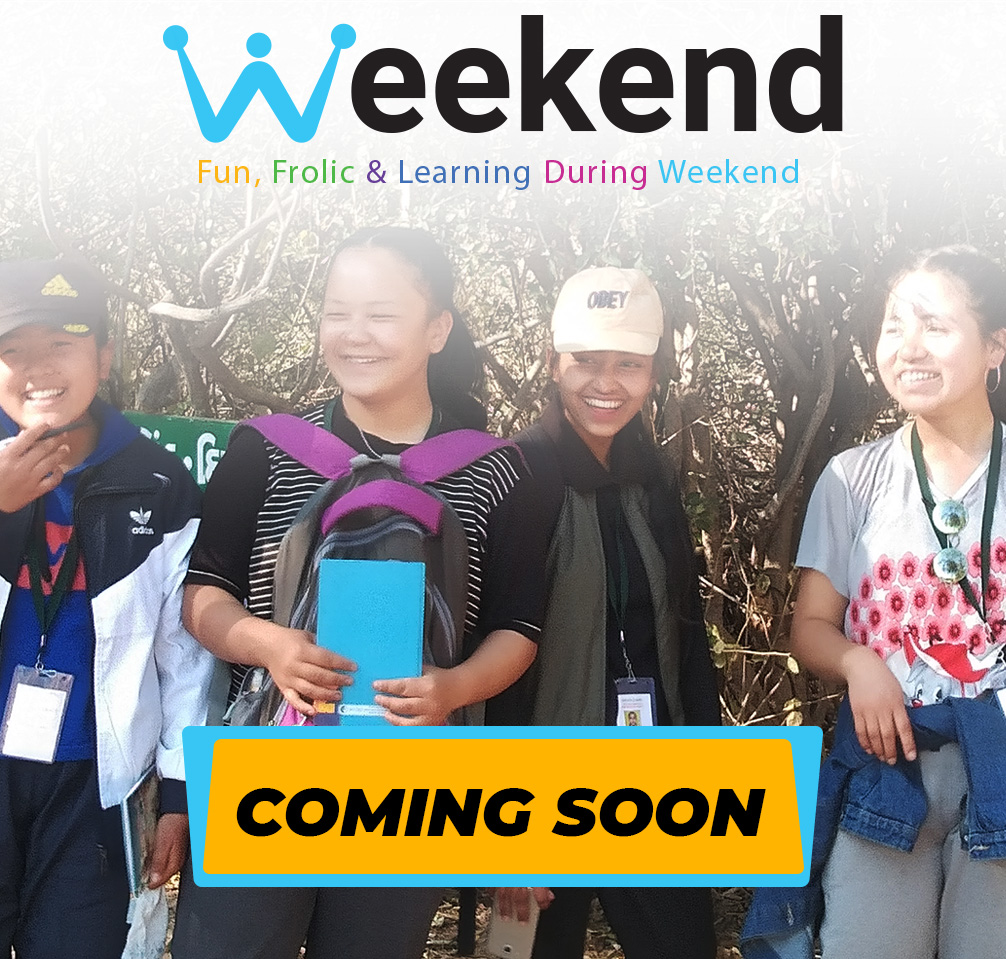
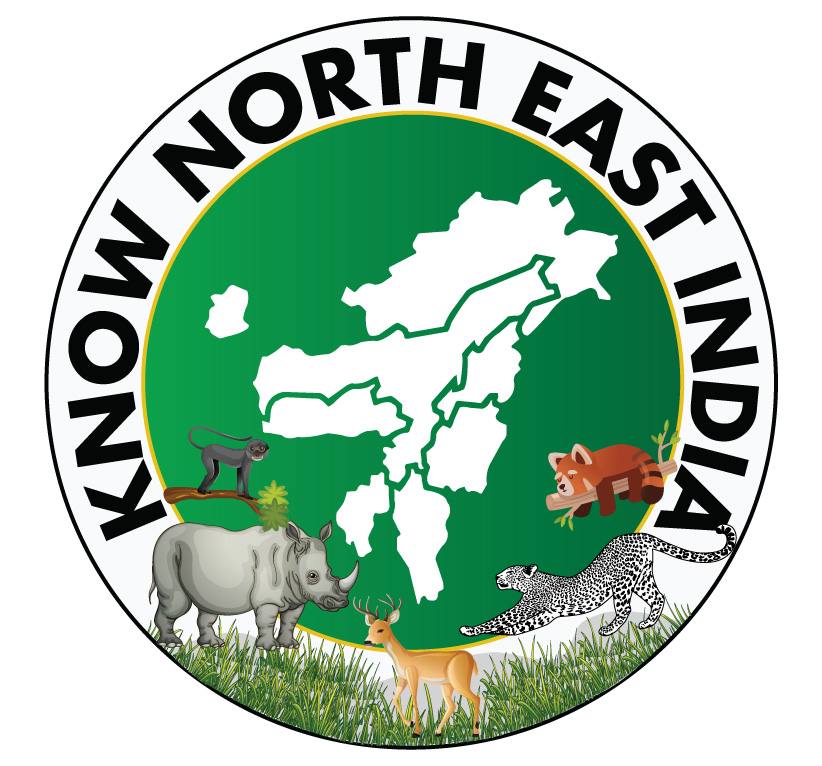
 Startup bharat educational travel startup sikkim invacations
Startup bharat educational travel startup sikkim invacations Impact of covid-19 on Indian travel startups
Impact of covid-19 on Indian travel startups 


